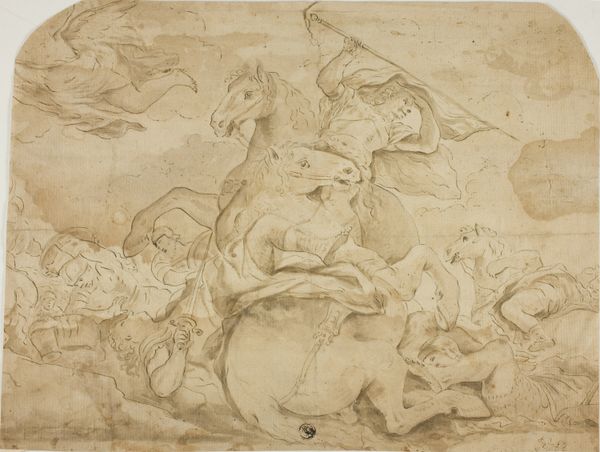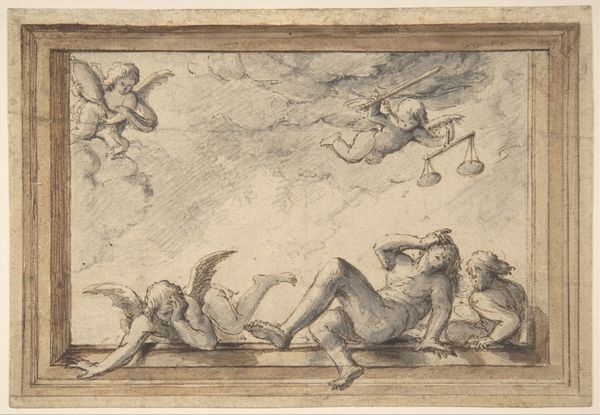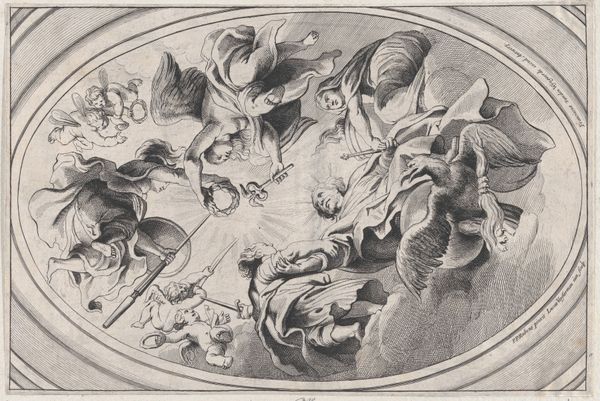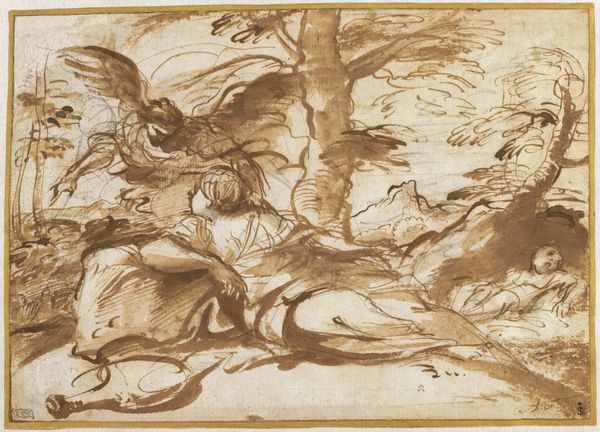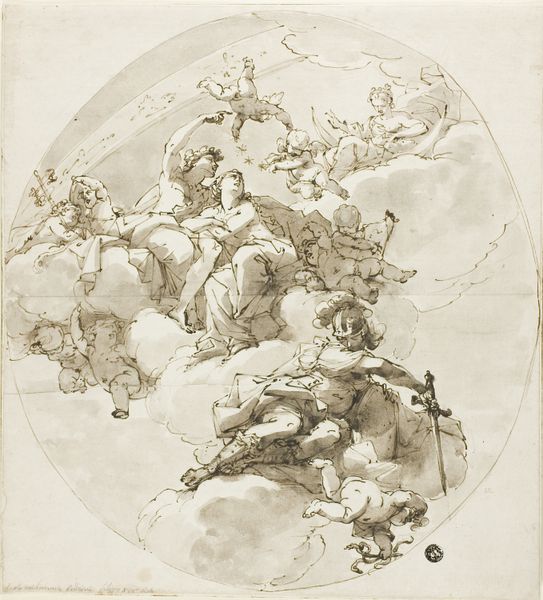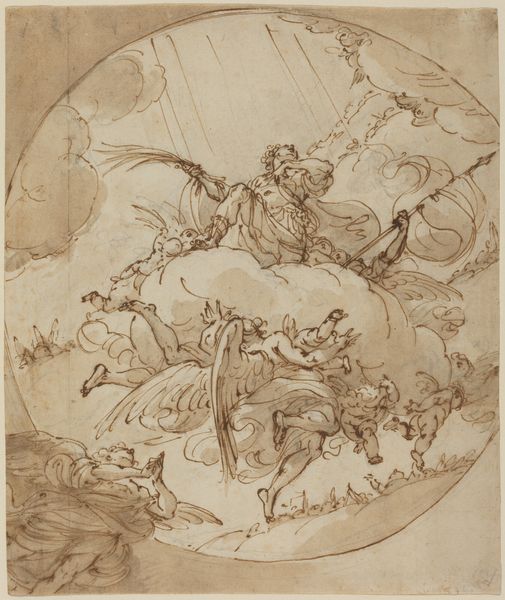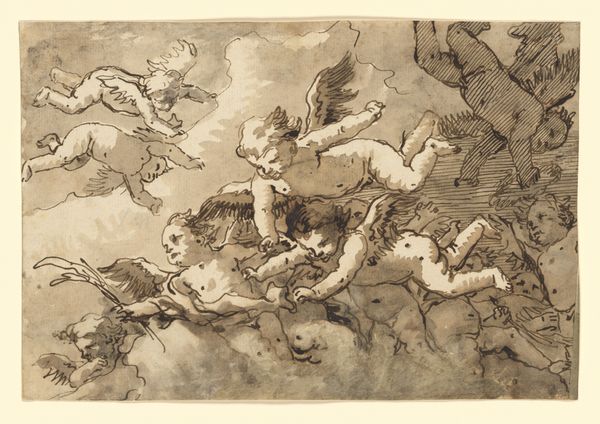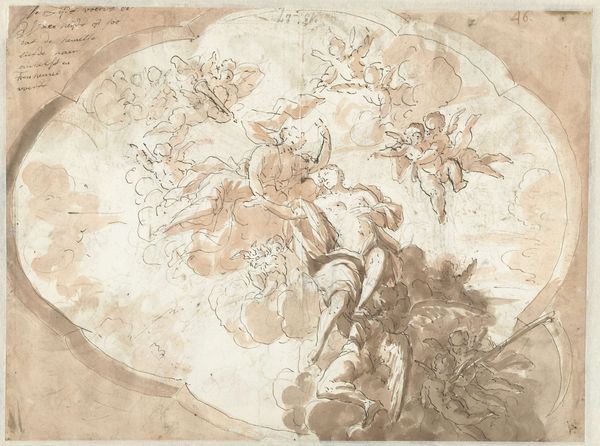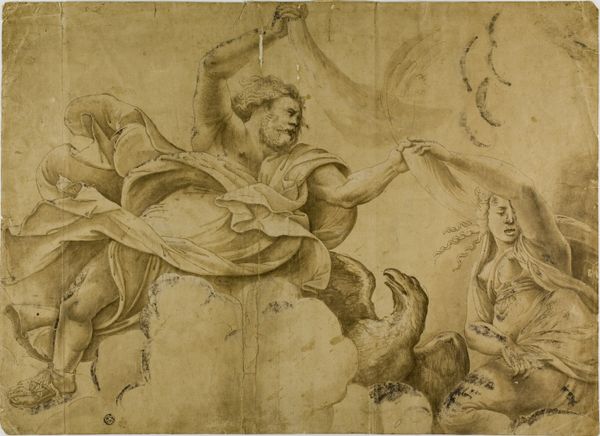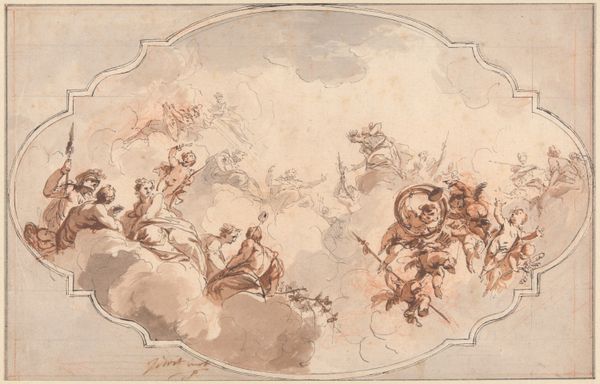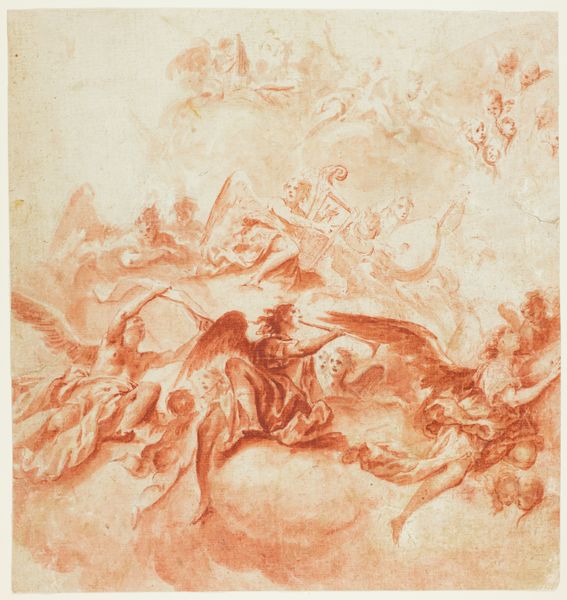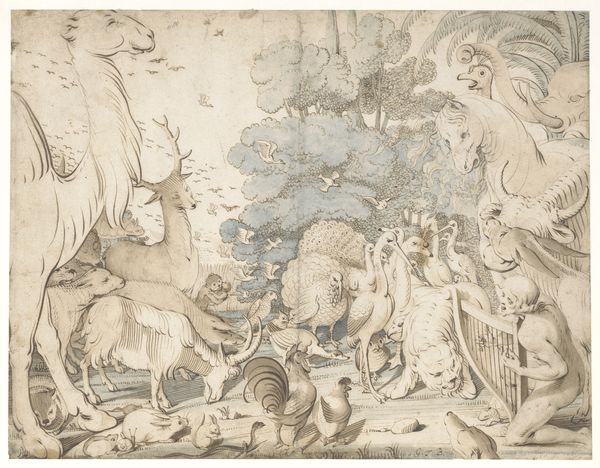
Adoration of the Burning Heart: Ceiling Design 1600 - 1700
0:00
0:00
drawing, print, ink
#
drawing
#
baroque
# print
#
figuration
#
ink
#
history-painting
Dimensions: 6-5/8 x 8-7/8 in. (16.8 x 22.6 cm)
Copyright: Public Domain
Curator: What a dreamy wash of sepia tones. It's light and airy. The composition feels traditional with a hint of something playfully subversive. Editor: Here we have an ink and wash drawing on paper. It is entitled "Adoration of the Burning Heart: Ceiling Design," an intriguing piece by an anonymous artist dating from sometime in the 17th century. It’s currently residing here at the Metropolitan Museum of Art. Curator: Right, the baroque style is evident with that dynamic energy, but the muted palette subverts the over-the-top ornamentation that so defines the period. There is something serene here despite the theatrics. Do you see this as an intentional response against rigid, prescriptive religious conventions, or perhaps a more subtle form of reinterpretation? The way the cherubs float weightlessly and lack clearly defined boundaries feels quite radical. Editor: It's fascinating to consider that. The design being intended for a ceiling also brings up the history of display—thinking about who would have been positioned to view such an image. Was it destined for a grand salon or a more intimate, private space? Knowing where this image might have been intended certainly helps in unpacking that intended sociopolitical influence. It also underscores the power of visual messaging in solidifying class and status. Curator: Precisely! Also, look at the symbol of the flaming heart—placed centrally. I wonder about the iconographic subversions at play, considering how such symbols can also function within alternative discourses that focus on lived experiences and internal spiritual journeys beyond the rigid confines of traditional doctrine. What’s the significance of the flaming heart within 17th century social dynamics beyond orthodox religion? Editor: Context is critical for understanding not just the symbolism, but also how audiences at the time may have perceived this work in relation to religious and social institutions. What did public reception of this work look like in its moment? The drawing invites so many exciting questions. Curator: Agreed! This "Adoration of the Burning Heart" resonates even now as a dialogue between the corporeal and the ethereal. Editor: For me, thinking about the original intent provides an understanding of art’s connection to institutional authority, in a way that resonates even in a contemporary setting.
Comments
No comments
Be the first to comment and join the conversation on the ultimate creative platform.
